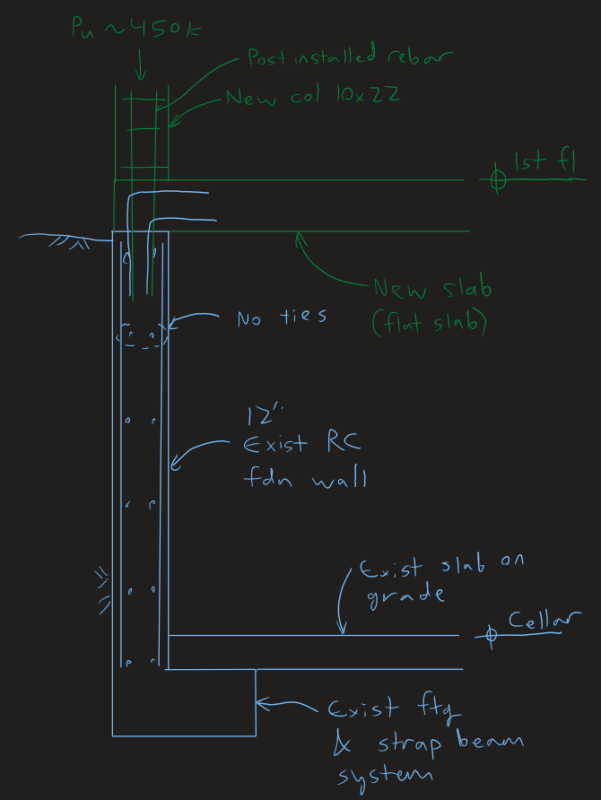milkshakelake
Structural
Is it possible to post-install column ties in a foundation wall?
I have a foundation wall that was installed without transverse ties, but it has a concrete column on top of it with about ultimate 450 kips axial load. Per ACI 318-14, ties are required:
I have a foundation wall that was installed without transverse ties, but it has a concrete column on top of it with about ultimate 450 kips axial load. Per ACI 318-14, ties are required:
11.7.4 Lateral support of longitudinal reinforcement
11.7.4.1 If longitudinal reinforcement is required for axial strength or if Ast exceeds 0.01Ag, longitudinal reinforcement shall be laterally supported by transverse ties.

